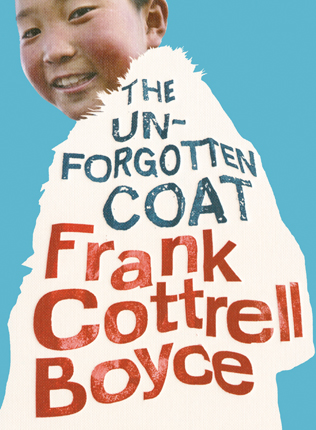Full Text Reviews: Booklist - 09/01/2011 With both humor and sorrow, this chapter book tells a contemporary refugee story in which illegal immigrants help a local kid find a sense of belonging. When Mongolian Chingis and his younger brother, Nergui, turn up in Julie’s sixth-grade class in Bootle, near Liverpool, they ask her to be their guide in “learning themselves ordinary.” They ask about the rules of football and the right buzzwords, and Chingis tells Julie about the exotic wonders of Genghis Khan’s Xanadu and shows her, and the reader, amazing Polaroids of nomads in the desert. In her first-person narrative, Julie describes the moving friendship, and even while the brothers hide from authorities, they help Julie learn to see the strange and wonderful in her own home, especially after she discovers that their “exotic” pictures were taken right where she lives, in the nearby fields and alleyways. Inspired by the many photo images throughout the story, readers will see the riches in the smallest details—even schoolyard trash cans. - Copyright 2011 Booklist. Bulletin for the Center... - 11/01/2011 In the summer term just after Year Six, Julie’s Liverpool classroom warily welcomes two new boys, oddly dressed in long, fur-lined coats. The older boy, Chingis, is always on the verge of getting in trouble for his cheekiness, and he insists that his younger brother, Nergui, must not take off his hat lest he turn violent. As Julie later discovers, the real reason Nergui keeps his hat on is because he and his brother are afraid-they claim that Nergui is being chased by a demon and must therefore hide, but the truth is that the boys are in the country illegally, and by the end of Julie’s account they have been whisked away in the night by authorities. Formatted as a worn school composition book with typed print and pasted-in pictures, the story is told in retrospect by Julie, whom the boys chose to be their Good Guide, a tradition they bring with them from their native Mongolia. Upon returning to the school as an adult, she finds that Chingis’ coat is still there in the lost and found, and she recalls her experiences with the boys as they learned to adapt to their environs by adopting Liverpool accents, engaging in schoolkid commerce, and playing soccer while she endeavored to learn about Mongolia. In the pockets of the coat, she finds pictures that Chingis tells her he brought from home but are instead Polaroid snapshots of the landscapes around Liverpool, framed to mimic stretches of desert, wide-open steppes, and even the shadow of a demon. The technique of including the pictures with their ambiguous content artfully drives home the larger point that the world is both bigger and smaller than Julie knows, as the scenes they depict are as foreign to her as if they had been from Mongolia, even though they are relatively local. Her interactions with the boys are as funny as they are poignant, and they delicately bring to the fore the human costs for children of the political unrest and oppression that leads to emigration. Pair with Tan’s The Arrival (BCCB 1/08) for stimulating discussion. KC - Copyright 2011 The Board of Trustees of the University of Illinois. School Library Journal - 11/01/2011 Gr 5–7—It's the end of sixth grade, and all Julie can think about is makeup and boys. Things change when two oddly dressed brothers show up at school. Even though it's hot outside, they wear identical fur-lined coats and claim to be Mongolian nomads. Chingis is cheeky to the teacher, demanding in no uncertain terms that his younger brother, Nergui, stay in the class with him for protection. The boys single out Julie to be their Good Guide. She takes her title seriously-she shows them how to dress and act and researches Mongolian history to share with the class. She's hoping that all this helpfulness will translate into an invitation to their home-she is sure it is filled with exotic silks and samovars. As Julie gets to know the brothers, she discovers that their life isn't as romantic as she imagined. They are fearful and evasive, believing that a demon is trying to make them vanish. Nergui isn't even the younger boy's real name-it means "no one," and he uses it to confuse the demon. When the boys disappear from school, Julie decides to follow them, using the images in Chingis's photos to guide her to their whereabouts. This story stems from the author's encounter with a young deportee, a Mongolian girl. Although the novel deals with the serious subject of illegal immigration, Boyce's dialogue is warm and humorous, keeping the book engaging. Chingis's mysterious Polaroids, displayed throughout the book, make for an intriguing format. Julie narrates the story as an adult, looking back, but an unusual ending gives it a contemporary, touching twist.—Diane McCabe, Loyola Village Elementary School, Los Angeles - Copyright 2011 Publishers Weekly, Library Journal and/or School Library Journal used with permission. Loading...
|



